Benefits of the Standing Military Press with a Barbell
People often do the military press for shoulder development. While the movement trains all three shoulder heads, these are far from the only muscles involved. The standing shoulder press is a full-body compound exercise that trains multiple large muscles in the body, improves your stability, and makes you stronger. As a result, you become more athletic and can handle everyday tasks with greater ease.
For example, since the military press strengthens your shoulders, lifting objects above your head gets easier. Playing with your kids, painting a wall, and stocking shelves are three of the many activities that improve as a result.
We recommend doing the standing military press first or second in your workouts as a full-body exercise. Doing so would allow you to perform at your best, maintain proper technique, and minimize the injury risk.
How to do a Standing Military Press
- Position the barbell at roughly collarbone height on a rack or stand. Begin with a light weight to get a good feel for the movement before adding more plates.
- Stand a few inches away from the bar and grab it with an overhand grip. Use a slightly wider than shoulder-width grip.
- With your hands gripping the bar, tuck yourself underneath, ensure that your shoulders are back, take a breath, engage your glutes, and push through your legs to unrack the bar.
- With your elbows tucked in, back straight, and gaze forward, take a couple of steps back and have your feet at hip-width distance.
- From this position, take a deep breath, engage your abs, and push through your elbows in a vertical line. Don’t bend and extend your knees to create momentum.
- Push until your elbows lockout and, as you exhale, slowly lower the bar until it’s at around neck level.
- Take another breath and press up again.
What muscles does the barbell standing military press activate?
The shoulders (deltoids) are the primary muscle group that works during a military press (1). These muscles provide stability at the shoulder joint and allow us to press the barbell above our heads.
Our triceps are the second major muscle group involved in the military press. The triceps brachii cover the rear of our upper arms and produce elbow extension, which occurs as we press the weight up (2). The upper chest (clavicular head) aids our triceps and shoulders in pressing the weight up.
Aside from the primary movers, the military press also works our midsection musculature. Our rectus and transverse abdominis, obliques, hip flexors, glutes, and lower back flex isometrically to support the torso. Similarly, the upper back muscles keep our shoulder blades retracted and further support our torso.
Building the Strength for the Standing Military Press with a Barbell
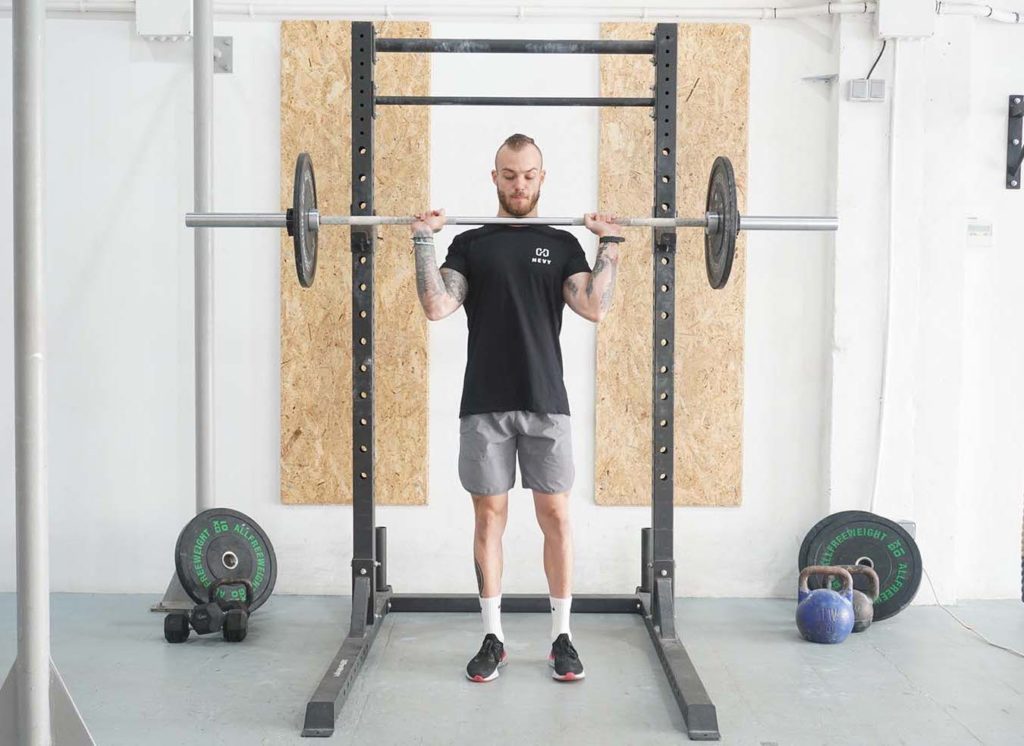
Despite its effectiveness, not every beginner should attempt the standing military press in their first months of training. The movement requires excellent stability to support the weight and press it overhead. Plus, beginners often lack strength in their shoulders and triceps, preventing them from pressing a standard barbell with proper technique.
Beginners should first improve their stability and pressing strength through other movements before doing the barbell military press. For example, trainees can do seated and lying dumbbell presses, lateral raises, and rope triceps pushdowns to strengthen the pressing muscles (shoulders, chest, and triceps). These movements will build the necessary pressing strength, making tackling the standing military press easier.
Improving stability will naturally occur with weight training, but trainees can also include the plank, reverse plank, glute-ham raise, and cable crunch to speed up the process. The exercises will strengthen the midsection, glutes, and upper back, allowing you to maintain a stable position while pressing.
Variations and Modifications of the Barbell Standing Military Press
1. Standing Pin Press
The pin press is a variation where you rest the barbell on pins inside a squat rack at chin level. Pin presses are beneficial because they allow you to overload your shoulders with more weight. Plus, resting the barbell on pins prevents you from using momentum. Your pressing muscles have to produce more force to lift the barbell from a dead stop.
2. Seated Military Barbell Press
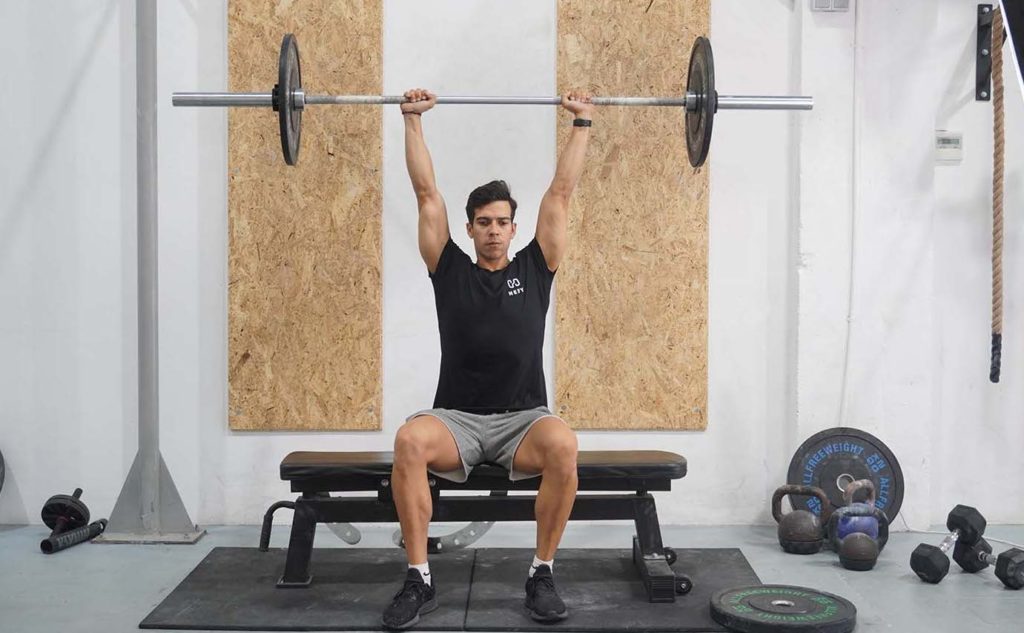
The seated military press is an effective alternative you can do inside a squat rack. Seated presses are beneficial for beginners because they require less stability, allowing you to focus entirely on lifting the weight with proper form (1).
3. Standing Dumbbell Press

The standing dumbbell press is the most challenging variation, stability-wise (1). Both sides of your body have to work independently. Plus, your midsection has to engage extra hard to keep you stable underneath the weight.
Mistakes to Avoid
One of the most common military press mistakes is gripping the barbell too wide. Intuitively, many trainees use the same grip width as with the bench press. The problem is, doing so places your prime moving muscles at a mechanical disadvantage, reducing your power output. To find your ideal grip width, have your arms to your sides, raise them forward, and place them over the barbell. The position would allow you to stack your wrists over your elbows.
Another significant mistake with the exercise is pressing the barbell around your head instead of using a straight vertical path. Inexperienced trainees don’t move their heads back and instead press the barbell forward and up to avoid hitting themselves. The issue is, doing so makes the exercise unnecessarily difficult and increases the risk of balance loss. Avoid the mistake by moving the barbell in a straight line up and down. Move your head back as you press the barbell and again as you lower it to the bottom position.
Bending your wrists is another mistake you need to fix for maximum power output and injury prevention. While not perfectly straight, your wrist should be in line with your forearms to prevent excessive stress and pain.
Similar Exercises to the Standing Military Press with a Barbell
Push Press
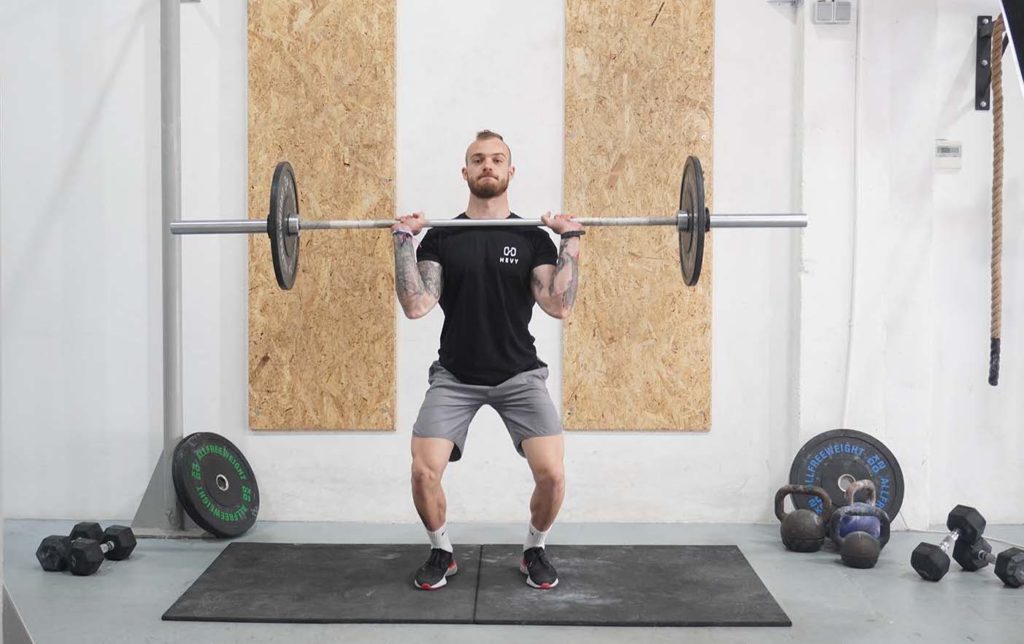
Push presses are similar to the standing military press in many ways. You’re training the same muscles, the range of motion is identical, and you’re using a barbell. The primary difference is that you have to dip slightly to create momentum off the bottom during push presses. In contrast, military pressing has you perform strict repetitions.
Plate Front Raise
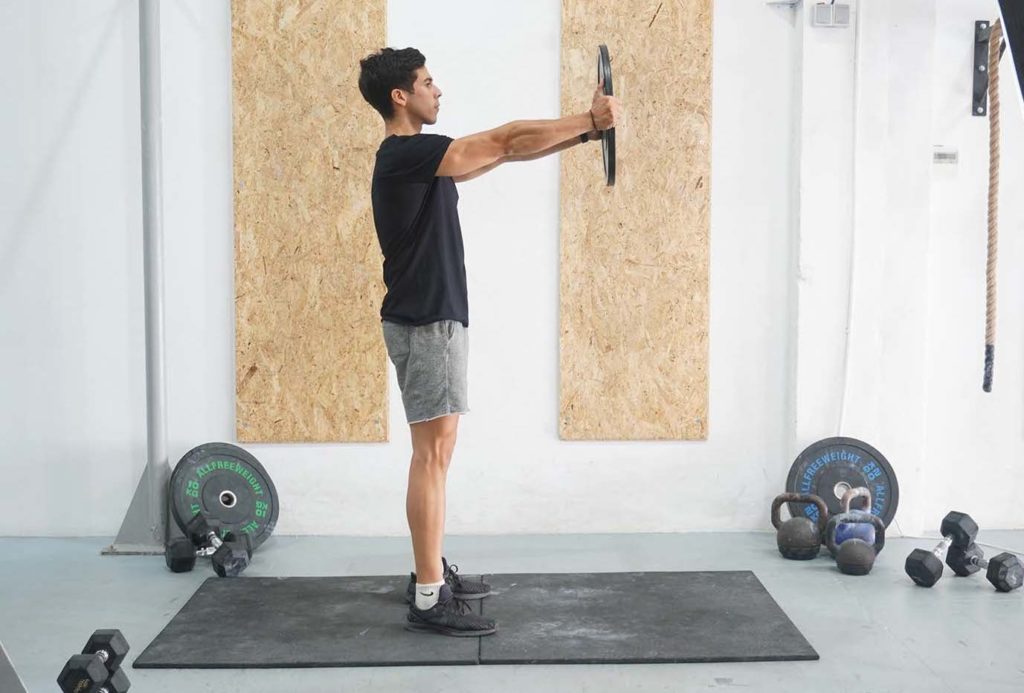
Plate front raises are a fantastic shoulder isolation movement (3). The goal is to grab a weight plate, hold it with both hands, and use your shoulders to raise it forward. Once the weight reaches head level, hold the position for a moment, and lower the plate to your upper thighs.
Lateral Raise (Dumbbell)
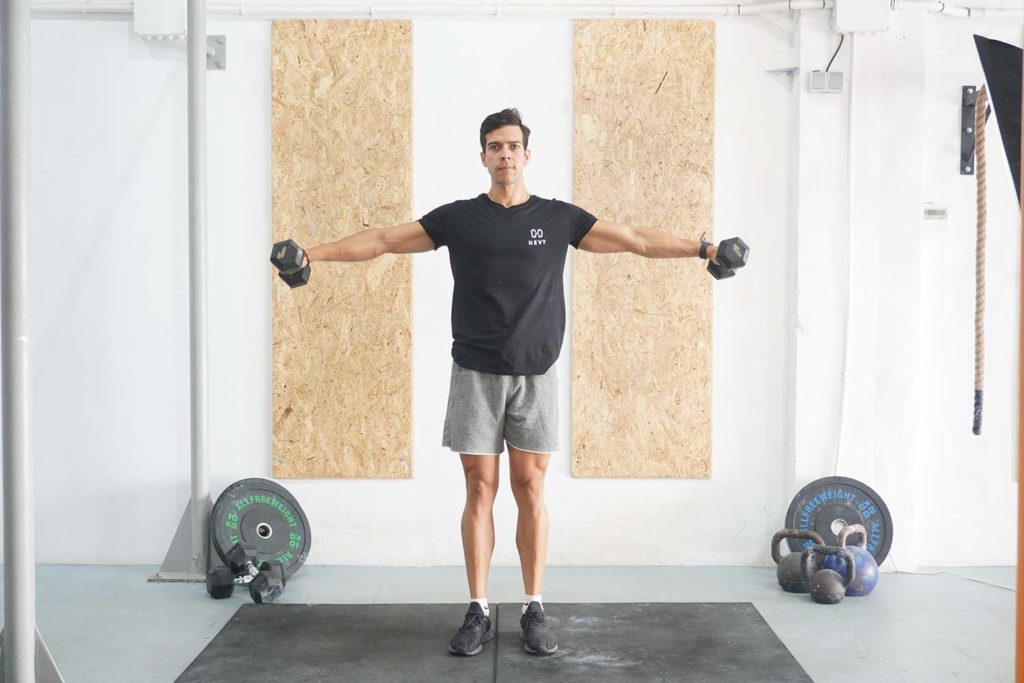
Like plate front raises, dumbbell lateral raises are an isolation movement that strengthens your shoulders, emphasizing the middle deltoid head (3). Lateral raises are beneficial because they strengthen the shoulders, improving your ability to press heavy weights above your head.
